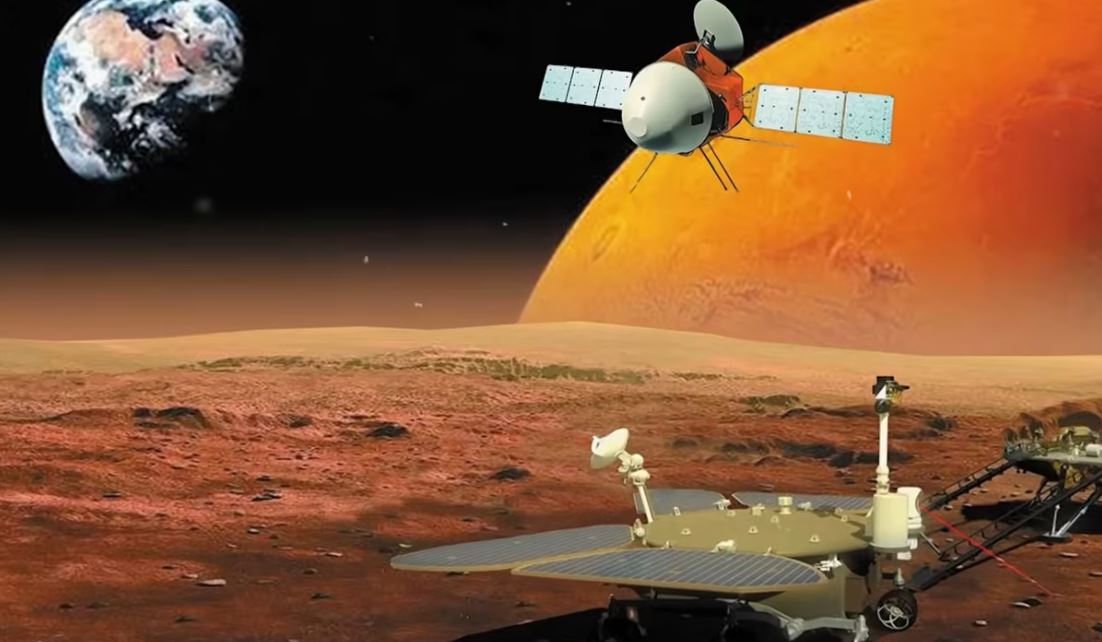A historic breakthrough in space exploration has just transpired, shaking the foundations of our understanding of extraterrestrial phenomena. China’s Tanwen 1 Mars orbiter has captured unprecedented images of the interstellar object known as Three Eye Atlas, revealing haunting glimpses of a cosmic enigma as scientists around the world scramble to comprehend the implications of this remarkable discovery. Between October 1st and 4th, 2025, the probe, which has quietly orbited Mars since 2021, succeeded in its astonishing mission, unveiling visuals that challenge everything we thought we knew about comets and the universe itself.

On October 3rd, from a staggering distance of nearly 29 million kilometers, Tanwen 1 recorded a never-before-seen portrait of Three Eye Atlas, exposing its radiant nucleus and an expansive coma stretching thousands of kilometers wide—a spectacle that evokes incredulity across the global scientific community. With NASA’s silence shrouding its own research, the attention has firmly shifted, making it painfully clear that China has breached an uncharted frontier in astronomy.
The journey to capture this extraordinary cosmic object was not without struggle. Three Eye Atlas, racing past Mars at an astonishing speed of over 68 kilometers per second, presented an exceptional challenge to mission planners. For four tense days, engineers and technicians recalibrated trajectories, fine-tuned exposure times, and navigated the technical intricacies of tracking a swift cosmic wanderer with instruments originally designed for bright Martian landscapes. It was a gamble, requiring precise timing and extraordinary deftness—failure would have meant missing the fleeting moment entirely.

Then, against all odds, the breakthrough arrived. The images relayed to Earth were hailed as nothing short of revolutionary. The clarity of detail not only illuminated the object itself but also unleashed a torrent of questions, beckoning scientists to consider the very nature of Three Eye Atlas. What exactly is this mysterious celestial body? As Beijing’s researchers reveled in what they termed a “once-in-a-lifetime frame,” the world collectively gasped, teetering on the edge of a new epoch in space discovery.
In a flurry of revelations, an animated GIF released by the China National Space Administration (CNSA) showcased the comet gliding steadily across the star-speckled darkness, igniting a vibrant conversation across social media and scientific forums alike. Enthusiasts named it “the blink of another world,” and the apparent choreography of the object’s tail led to wild speculations: Was it a product of natural cosmic forces, or was there something more deliberate at play? Why was the tail pulsating in a manner reminiscent of life itself?

As Triple Eye Atlas captured the world’s imagination, NASA found itself under increasing scrutiny. As revelations of China’s findings spread, curiosity morphed into frustration as the public clamored for NASA’s corresponding images, especially from the Mars Reconnaissance Orbiter, which possesses superior resolution capabilities. Questions arose regarding the silence from the American space agency—officially attributed to a federal government shutdown—yet as weeks passed, doubts began to fester. Some critics voiced that this excuse inadequately explained the absence of powerful images that could have validated or refuted China’s stunning achievements.
Congress stepped in as frustration mounted. On October 31st, 2025, Representative Anna Paulina Luna issued a formal letter demanding NASA’s transparency and immediate release of the previously withheld images. Undeniably, the balance of space exploration had seen a shift; the political shockwaves emanating from this cosmic event indicated a deepening divide in how scientific information was managed and disseminated.

Behind closed doors at NASA, rumblings of concern echoed. Insiders whispered of high-resolution images that displayed unfamiliar structures and patterns within the comet’s coma—details suggesting a potential divergence from the traditional understanding of cometary behavior. Could it be that Three Eye Atlas was more than a simple interstellar rock, perhaps something shaped by an intelligence beyond our comprehension? Questions bubbled up, urging scientists to tread carefully as they navigated the murky waters of cosmic discovery and public anticipation.
As China positioned itself as the primary source of this extraordinary interstellar data, a new race consciousness emerged, not merely for territory but for truth. Every major space agency around the world honed its gaze towards Three Eye Atlas. Amidst this chaotic atmosphere, China released a follow-up report detailing faint blue flashes detected near the comet’s tail—an unsettling finding, suggesting an interaction between this interstellar body and the solar environment, piquing interest in unimaginable ways.

The world is now witnessing something previously thought impossible: a collaborative yet competitive global pursuit of understanding, spurred by Three Eye Atlas, a silent herald from the far reaches of space. The stage is set for what could be the most enthralling chapter in interstellar studies, as every telescope, radar system, and cosmic observer turns its focus toward unraveling the mysteries cloaked within the shimmer of this fleeting celestial visitor. Humanity stands at a remarkable juncture where scientific dogma clashes with the unknown, and the interstellar journey of understanding has only just begun. The universe has sent a message—all eyes are watching closely, and no one is ready to look away.






